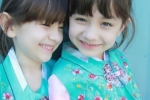
英语作文中特别好的句式【一】
It was Sunday. Our teacher Mr Zhu led us to a park nearby.Usually we go to the park to spend our holiday. But today we went there to take part in voluntary labour.
We got there at nine o'clock. Mr Zhu divided us into three groups and then we began working.
The students in Group One planted trees and watered flowers. The studentsin Group Two were busy collecting litter left by the tourist. They also cleaned the benches in the park. I was in Group Three. We went to the children's playground and cleaned all the equipment there. We worked very hard.
At about eleven we finished working. We met at the gate of the park. We all felt tired but very happy.
英语作文中特别好的句式【二】
伍谦光(1995∶199指出:“‘词汇歧义’是指由于对句子中某一个词的意义有不同的理解而产生的歧义。”
2.1因“一词多义”(Polysemy引起的歧义
Robert.A.Hall指出“人们在各种不同场合赋予一个词以各种不同的意义。这些意义自然也就是这个词的真正涵义”(周立人,1997∶4。由此可见,一个词的词义往往是多义的。侯国金(1998∶66说:“一个词若具备两个或两个以上的意义便是‘多义词’。”因此,用多义词造句就可能产生歧义。当然,只要我们把多义词放到一定的语境里,一般可以避免歧义。不过有时我们会遇到一个多义词的两个不同意义在句子中都讲得通,这样,句子就产生了歧义。下面是一些实例:
2.1.1名词
(12Mr.Smith gave me a ring yesterday.
句子中的ring可理解为“戒指”,也可理解为“打电话”。
2.1.2动词
(13He painted a tree.
此句中的painted可作“涂上油漆”解,也可作“用颜料画”解。
2.1.3形容词
(14It is hard.
句中的hard可作“艰难的”解,又可作“坚硬的”解。
2.1.4副词
(15The man was walking backwards.
句中的backwards可作“向后”解,又可作“背朝后”解。
2.1.5介词
(16The vase is on the television.
此句中的on,可作“在……之上”解,也可作“上了电视屏幕”解。
2.1.6连词
(17Oil the machine in case it gets rusty.
句中的in case可解释为“以防”,也可解释为“如果”或“当……时候(尤其在美国英语中”。
2.1.7代词
(18You should be quiet.
句中的You可以是主格第二人称代词“你,你们”,也可以是不定人称代词,泛指“任何人”。
2.1.8数词
(19She is a mother of sixteen.
句中的基数词sixteen既可作“十六岁”解,又可作“十六个孩子”解。
2.1.9冠词
(20It can be moved by a child.
句中的不定冠词a既有数量的概念,即“one”的意义,也有种类的概念,即指孩子,而不是大人或其它什么东西。
2.2因“完全同形同音异义词”(Perfect homonyms引起的`歧义
林承璋(1997∶82认为:“同形同音异义是指两个或两个以上的词具有相同形式不同意义的现象。”具体来说,同形同音异义词是指意义不同、读音和拼写都相同或意义不同、但在读音或拼写某一方面相同的词。
完全同形同音异义中的B类由于读音、拼写和词性都相同,所以易引起歧义。下面是一些实例:
(21a.John drove to the bank.
b.He was attracted by the ball.
c.The tourists passed the port at midnight.
这三个例句中的bank,ball,port都属于完全同形同音异义词,即读音、拼写和词性都相同,但由于意义不同而引起了歧义。例(21a中的bank既可以理解为“银行”,又可以理解为“河岸”。例(21b中的ball既可以理解为“球”,又可以理解为“正式舞会”。例(21c中的port既可以理解为“港口”,又可以理解为“葡萄酒”。











